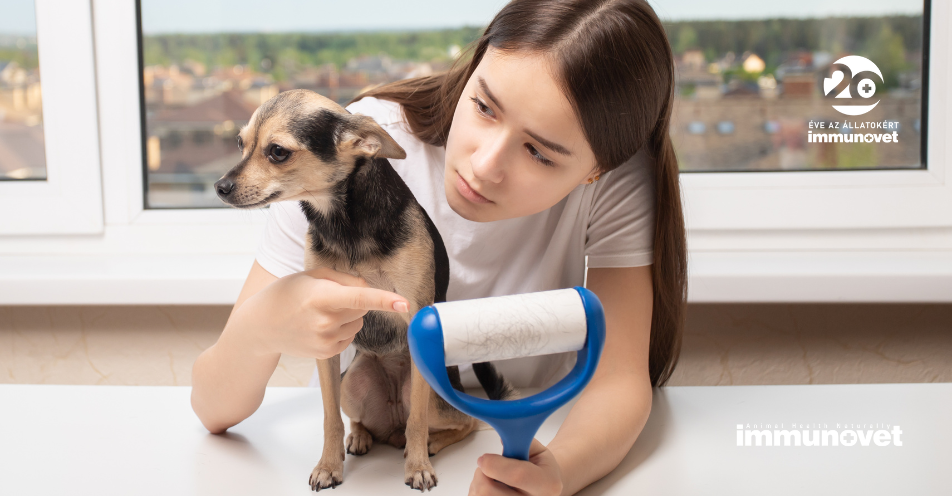Spring is here, hair is falling

As spring arrives, many dog owners are faced with the phenomenon of their pet suddenly losing a large amount of fur.
As spring arrives, many dog owners are faced with the phenomenon of their pet suddenly losing a large amount of fur. It's spring shedding, which is a natural process in a dog's life, and while it's inevitable, there are methods and tips that can help keep shedding under control. Here are some useful tips on how to treat hair loss caused by spring shedding, and when to see a professional.
Regular brushing and grooming
Regular brushing is one of the most important ways to treat spring shedding. Use a properly selected brush or comb based on the type and length of the dog's hair. Regular brushing helps to remove dead hairs and reduces the amount of hair loss.
Bathing and conditioning
Proper bathing and conditioning can help reduce shedding. Use skin-friendly shampoo and conditioner developed for dogs. Bathing removes dead hair stuck in the hair follicles and cleans the dog's skin, thus helping natural hair growth.
Nutrition and dietary supplements
Proper nutrition and dietary supplements can play an important role in maintaining the quality and health of your dog's coat. Choose a quality dog food that is rich in essential nutrients, such as omega-3 fatty acids, which promote coat health. Immunovet helps with fur and skin-related symptoms, such as hair loss and itching. It is recommended to use it as a cure in the spring.
Air conditioning and dehumidification
Overheating and high humidity can also increase shedding in dogs. In an uncomfortable environment, the dog is more prone to shedding, as this is a natural reaction of his body. It is important to ensure adequate air flow and temperature in the dog's area, and to use a dehumidifier or air purifier to dry out the humid environment.
When should we go to the doctor?
Although spring hair loss is usually a normal phenomenon, in some cases it may be necessary to consult a specialist. If the dog's hair loss is extremely intense, asymmetrical or patchy, or if other symptoms appear in addition to the hair loss, such as redness, itching or peeling, it is worth contacting the veterinarian. A veterinarian can identify any underlying health problems or skin conditions and recommend treatment or further testing as needed.
Spring shedding and shedding is a natural phenomenon in the life of dogs, which cannot be completely prevented. However, with a few simple methods and tips, we can reduce the amount of hair loss and minimize the scattering of hairs in our home. It is also important to pay attention to the dog's coat quality and general health, and if necessary, do not hesitate to consult a specialist to rule out or treat underlying health problems. Careful treatment and attention help to maintain the dog's comfort and well-being during the spring period.
